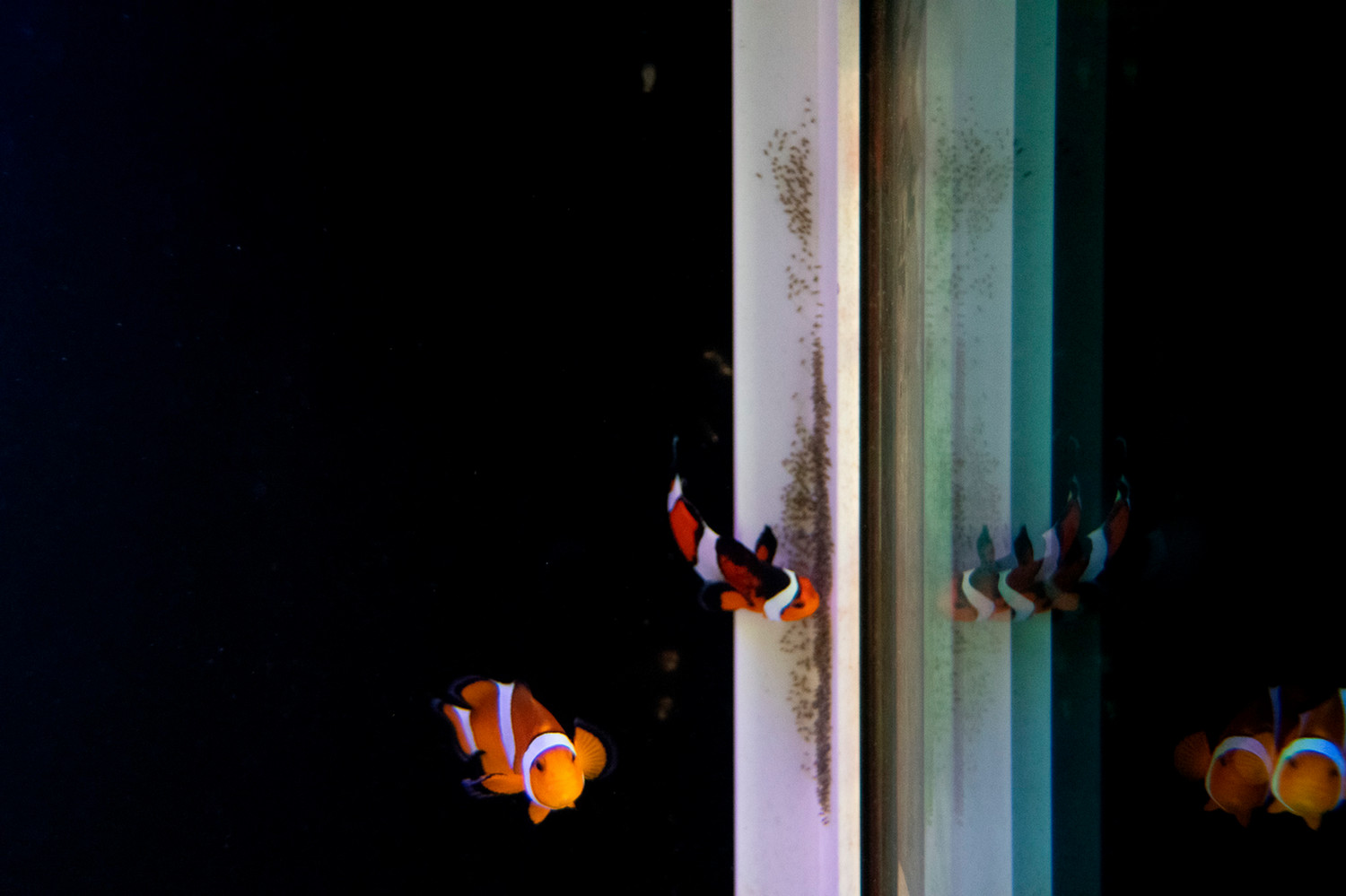Sea Life Facility Clownfish Hatchlings Prove Aggieland Doesn’t Stop At The Water’s Edge
May 8, 2024
Tweet
By Lucie Hartman '24, Division of Marketing and Communications
Classroom learning looks a little bit different at Texas A&M University at Galveston, where students can study alongside reef fish and corals. Student staff have the opportunity to care for Aglantis, a 380-gallon saltwater reef tank in the outreach center of the Sea Life Facility (SLF). Along with other tropical reef fish, Aglantis is home to a pair of common clownfish who frequently lay clutches of eggs in the back corner of the tank. Those eggs never reached adulthood until Kirsten Hardy '24, a student technician in the facility, decided to help them grow.

Hardy is an oceans and one health student, an interdisciplinary concentration that can provide a flexible path into the medical or veterinary field. She has worked at the Sea Life Facility for five semesters, and says that A&M-Galveston is the perfect place for practical marine biology experience and that the rhythms of the SLF have prepared her for a career in animal care and facility work.
“Getting hands-on experience with behind-the-scenes aquarium maintenance and animal care of all kinds has really prepared me for my future,” Hardy said.
Hatching out larval fish is notoriously difficult in the aquarist world, as fish larvae, also called fish fry, are highly sensitive to temperature, water flow and light. They also require a high volume of live feed for the first week after hatching, requiring the additional culturing of microscopic feed animals. In the wild, 99% of all fish larvae don’t make it to adulthood.
“I wouldn’t have been able to hatch these guys without the collaboration and support of all of the staff at the Sea Life Facility,” Hardy said of the effort, “I even developed the idea from one of my coworkers, Emilia Tschen, who had mentioned trying to collect them.”
To comply with permitting on the fishes in Aglantis, Hardy first tried implementing a Vossen’s Larval Trap to catch the clownfish fry once they hatched. An acrylic container that attaches to the inside of the tank, Vossen’s Larval Traps are designed to lure the larvae into safety as soon as they hatch. Eggs usually hatch at night, making it challenging for aquarists to ensure their survival among predatory fish in the tank, so the Vossen’s Larval Trap uses an LED light to lure the fry and gently pumps air that floats them into the container, where the aquarist can transport them to a separate system.

Despite diligently checking for larvae every night, Hardy’s first attempt to raise the hatchlings was unsuccessful. She decided to try a different approach by using a piece of white PVC to the corner edge of Aglantis where the parents usually laid their eggs. Hardy left the clutch in the tank as long as possible to give the eggs their best chance of survival, as the male clownfish aerates the eggs and removes dead ones to protect the others. The student staff of the SLF monitored the clutch and removed them just days before hatching.
A few days later, about fifty larval clownfish successfully hatched off of the PVC. SLF staff attentively fed the fry and cleaned the tank twice every day. The clownfish ate rotifers, a microscopic zooplankton grown in the facility, until they grew large enough to eat brine shrimp larvae and pellet feed. The fish reached maturity after 15 days and are now being cared for in the facility.
 Juvenile clownfish in the SLF, each about a centimeter long
Juvenile clownfish in the SLF, each about a centimeter long
This project would not be possible without the gift of Aglantis to the Sea Life Facility in 2022. The numerous fish in the tank are ambassadors for tropical reef life, educating and bringing awareness to ocean diversity and preservation.
Successful hatching of larval clownfish requires marked precision and consistency. All animals have different preferences, personalities and requirements, and getting those parameters just right can take time. However, SLF staff like Kirsten Hardy are well equipped with the knowledge and passion to bring projects like this to fruition. Education at A&M-Galveston often goes below the surface, many times literally, and is possible through the unique opportunities like the Sea Life Facility.
###
Media contact:bounds@tamu.edu
More:
Read more about Health & Environment
Read more about TAMUG Research
Read more about Science & Technology
Read more about Marine Biology
Read more about Student Life